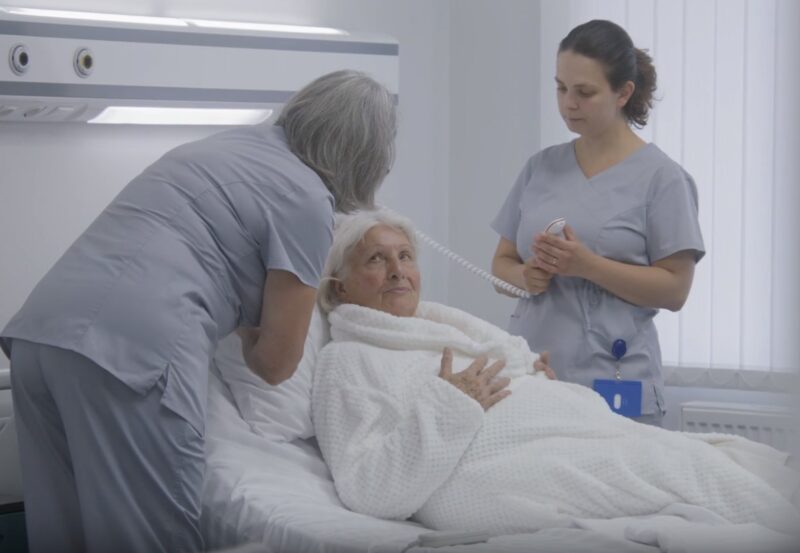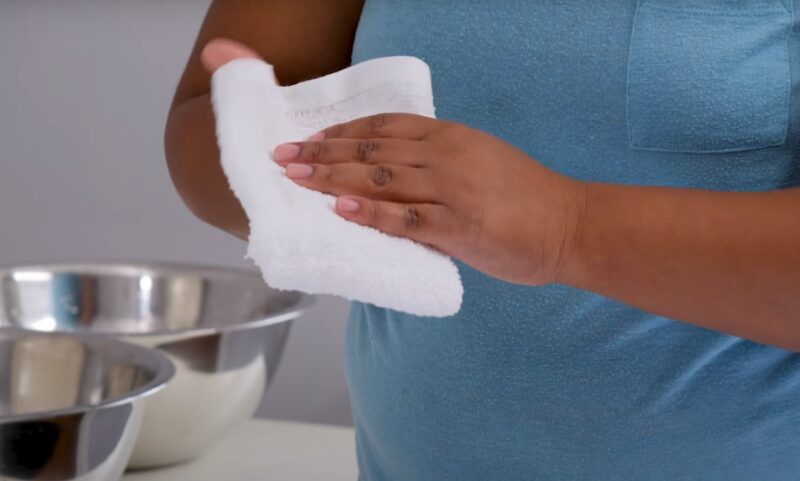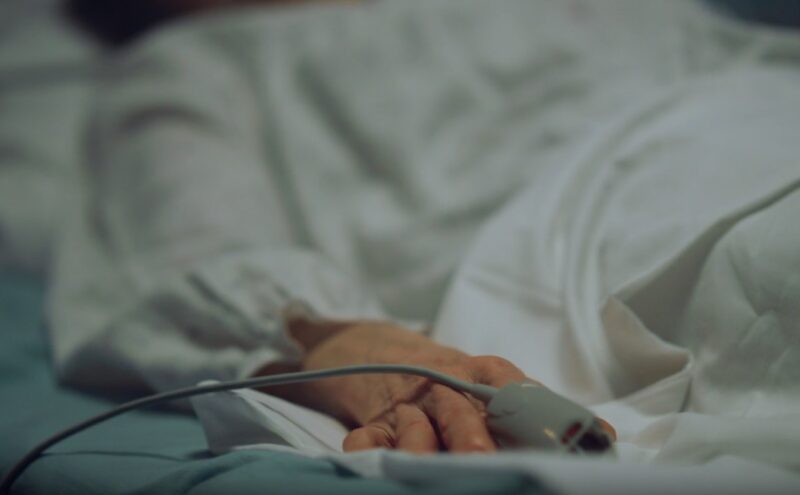Bed sores, also known as pressure ulcers, are a common and serious condition predominantly affecting bedridden patients or those with limited mobility.
They arise from prolonged pressure on the skin, which impedes blood flow to the area, leading to tissue damage or death. Areas most at risk are those where bone is close to the skin, such as heels, ankles, hips, and tailbone.
The risk increases in individuals who are unable to change positions independently, have poor nutrition, or suffer from conditions that affect blood flow. Preventative measures include regular repositioning, specialized mattresses, and diligent skin care.
Here are the best preventive measures to implement for your patients.
1. Change Positions Frequently

Changing positions frequently is essential for individuals who are bedridden or have limited mobility to prevent the development of pressure ulcers, also known as bed sores.
Continuous pressure on the same areas of the body restricts blood flow, leading to tissue damage or necrosis. To mitigate this risk, it’s recommended to reposition the body at least every two hours.
This can involve shifting from lying on one’s back to lying on either side or, if possible, sitting up with support. Each position change helps redistribute pressure and enhances blood circulation to different body parts.
For those unable to reposition themselves due to physical limitations or weakness, assistance from family members, caregivers, or healthcare professionals is crucial.
They can help in gently turning the individual, ensuring that the moves are smooth to avoid friction and shear that might harm the skin further. In addition to turning, it is also important to adjust pillows, support devices, and the bed to accommodate the new position comfortably and securely.
2. Keep Skin Clean And Dry

Clean skin is less prone to infections and irritations that can exacerbate the risk of pressure ulcers. Using a wash rag or soft cloth, gently cleanse the skin with warm water and a mild, non-irritating soap.
This helps remove sweat, bacteria, and any substances that could irritate the skin or clog pores. It’s crucial to pay special attention to areas that are more susceptible to pressure sores, such as the back, buttocks, heels, and elbows.
In addition, the folds of the skin and areas where medical devices come into contact with the skin should be carefully cleaned to prevent any buildup of moisture or bacteria.
For individuals who cannot reach all areas of their body, a caregiver’s assistance is invaluable in ensuring thorough cleanliness. After washing, drying the skin is equally important.
Moisture can lead to skin maceration, making it more vulnerable to damage. Pat the skin gently with a soft, absorbent towel to dry it completely, avoiding any rubbing or harsh movements that might cause abrasion or irritation to the skin.
Special attention should be given to drying skin folds and areas under medical devices, where moisture can easily accumulate. Also, if wounds are present, be sure to learn more about proper treatment and whether you could speed up the healing process.
3. Use Pillows

Pillows provide cushioning and support, alleviating pressure points by ensuring that bones and joints are not pressing directly against each other or the support surface.
This is particularly important in areas where the skin is thin and bony prominences are close to the surface, such as the tailbone, shoulders, heels, and elbows.
National Institutes of Health recommends placing a pillow under your tailbone, shoulders, heels and elbows.
When lying on one’s side, the knees and ankles can press against each other, leading to increased pressure and the potential for skin damage.
Inserting a pillow between the knees and ankles not only prevents direct contact but also helps maintain proper alignment of the hips and spine, contributing to overall comfort and reducing the risk of pressure-related injuries.
4. Exercise

Even when confined to bed, engaging in simple range of motion exercises can stimulate blood flow, enhance muscle strength, and prevent joint stiffness, all of which contribute to the overall well-being and help in the prevention of pressure ulcers.
Starting with basic arm lifts is an excellent way to initiate movement. By lifting one arm as high as possible and holding the position for about 10 seconds, you engage the muscles and encourage blood circulation to the area, which is vital for skin health and pressure sore prevention. Repeating this exercise with the other arm ensures that both sides of the body receive the benefits of the movement.
Expanding beyond arm exercises, leg lifts and ankle rotations can similarly promote circulation in the lower extremities, areas often at high risk for pressure ulcers due to prolonged pressure when lying down.
5. Maintain a Healthy Diet and Stay Hydrated

A diet that is rich in essential nutrients supports skin health and resilience, while keeping the body well-hydrated maintains skin elasticity, making it less prone to damage and breakdown that can lead to pressure ulcers.
Proteins are essential for repairing body tissues and fostering new tissue growth, thus playing a key role in maintaining skin integrity and aiding in wound healing.
Incorporating high-quality protein sources into the diet, such as lean meats, poultry, fish, eggs, dairy products, legumes, and nuts, can provide the necessary amino acids for tissue repair and maintenance.
Vitamins and minerals, particularly vitamin C and zinc, are also vital for skin health and the healing process. Vitamin C is involved in the production of collagen, a key component of skin tissue that helps in wound healing.
Zinc plays a role in maintaining skin integrity and immune function. Foods rich in vitamin C include citrus fruits, strawberries, bell peppers, and broccoli, while zinc can be found in meats, fish, whole grains, and dairy products.
Hydration is another essential factor in maintaining skin health. Adequate fluid intake ensures that the skin remains hydrated and supple, reducing the risk of dryness and cracking, which can lead to the development of bed sores.
It is recommended to drink sufficient water throughout the day, while also considering the hydration provided by other beverages and high-water-content foods like fruits and vegetables.
FAQs
What is the life expectancy of someone with bedsore?
The life expectancy of someone with bedsore depends on many factors. Some bedsores heal in six months, but some may never heal.
How do you heal a bedsore fast?
To heal a bedsore fast, you need to do several things. You need to reduce the pressure, clean the wound, apply a dressing, remove dead tissue, take antibiotics, and eat well.
What is the fastest way to cure bed sores at home?
Some home remedies that may help cure bed sores are honey, aloe vera, papaya milk, comfrey leaves, elm, turmeric, witch hazel, and myrrh. These remedies can help prevent infection, reduce inflammation, moisturize the skin, and promote healing. But you should always ask your doctor before using them.
What is the name of the powder for bedsores?
One powder for bedsores is talcum powder. It can help keep the bedsores dry and reduce infection. Another powder for bedsores is zinc oxide powder. It can help protect the skin and speed up healing.
The Bottom Line
Preventing bed sores is crucial for individuals with limited mobility or those confined to a bed for extended periods. Attention to detail, consistent care routines, and a proactive stance on health management form the foundation of effective prevention strategies.
Ensuring that individuals receive the necessary support and resources to maintain their well-being is key to enhancing their quality of life and preventing the occurrence of bed sores.







